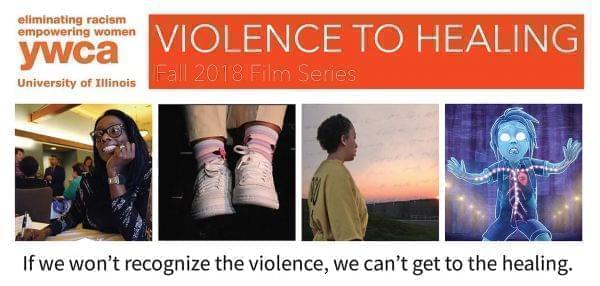Community Film Series Aims To Interrupt The ‘Trauma-To-Prison’ Pipeline For Women And Girls

University of Illinois YWCA website
The University of Illinois YWCA hopes to raise awareness about how trauma and abuse put women at greater risk of ending up in the criminal justice system.
“Seventy-two percent of girls in the justice system have experienced sexual or physical abuse,” said Andrea Rundell, executive director of the U of I YWCA, citing a study from the Georgetown Law Center. “[That’s] 4 to 6 times higher than boys.”
Rundell says her organization hopes to bring the community together to discuss possible solutions through a film series that begins on Thursday, Oct. 11.
Illinois Public Media spoke with Rundell about the “trauma-to-prison” pipeline and what can be done to stop it.
The following transcript has been edited for clarity:
Christine Herman: The Violence To Healing Film and Discussion Series hosted by the U of I YWCA aims to bring attention to the experiences of women and girls who've been swept into the "trauma-to-prison" pipeline. What is that exactly?
Andrea Rundell: Girls overwhelmingly enter the justice system as a result of their reactions to traumatic experiences. Seventy-two percent of girls in the justice system have experienced sexual or physical abuse, which is some four to six times higher than boys. To stop girls from going into the criminal justice system, we have to appropriately respond to the traumas in their lives so that they're not doing the kinds of things that we criminalize.
CH: Why are women and girls of color at greater risk?
AR: It's really the intersection between sexism and racism. White girls have protection by having white privilege, which is just to say that they are recognized as being who they are, while black girls are still very heavily stereotyped as being more sexually active, more involved with drugs or substances. And so, at the same ages, they're viewed very differently.
For instance, if a girl is living in an abusive situation at home, they may run away, which is a perfectly appropriate thing to do to get away from an abusive situation. However, what we do is, we say, 'Okay, they're a runaway. Put them in the criminal justice system.' And for girls of color, since they are perceived as being less innocent and more adult, we treat them as less innocent and more adult, so they don't deserve or need protections. Instead, we say, 'Oh, she's 8, but she's already in sex and drugs. That's it, time to just put her into the justice system and shake her up.'
CH: How did you choose the films and topics that will be discussed in the Violence to Healing film and discussion series?
AR: We really want to just bring light to the situation. What we want to do is have people recognize the traumas that occur in our community and how we can handle them as a community.
We can do things to make this a safer place physically, psychologically, for women and girls to grow up in. The films will explain how trauma and abuse build this cycle, how we make decisions as a society that perpetuates the cycle and worsens the trauma, and how we can simply change those things.
Follow Christine on Twitter: @CTHerman
Links
- Trauma And Our Kids: A Community Conversation
- Addressing Trauma In Schools; Sexual Abuse At CPS; ‘Character Education’
- How Gun Violence Is Traumatizing Kids And What Schools Can Do About It
- ‘Healing Solutions’ Training Program Equips People To Help Trauma Victims
- Gun Violence, Trauma & Grief; The Old State Capitol’s Legacy; Financial Exploitation
